EXTREMELY RARE! WWII 1944 USS DuPage (APA-41) Battle of Leyte Beachhead Landing Invasion Map (Double-Sided)
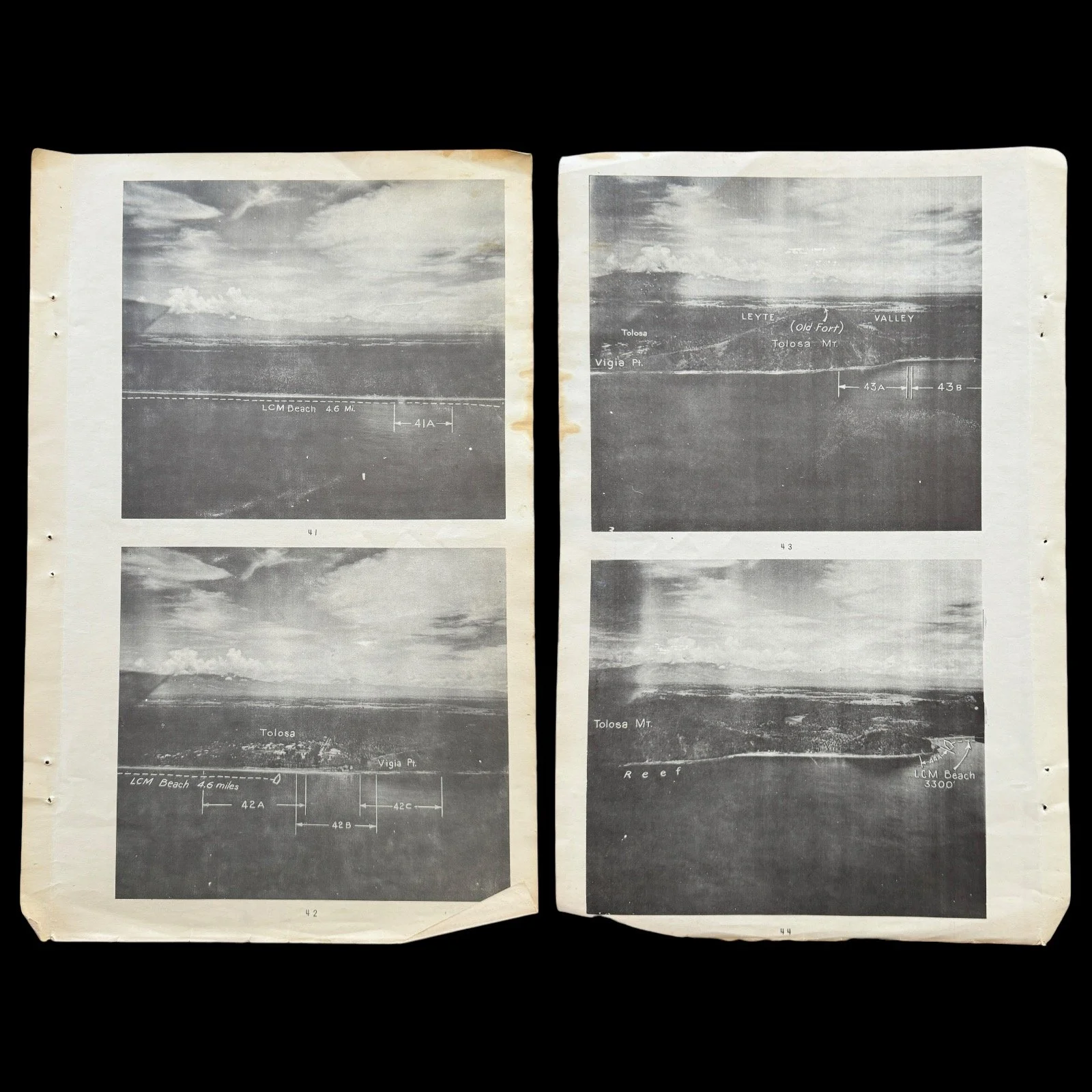
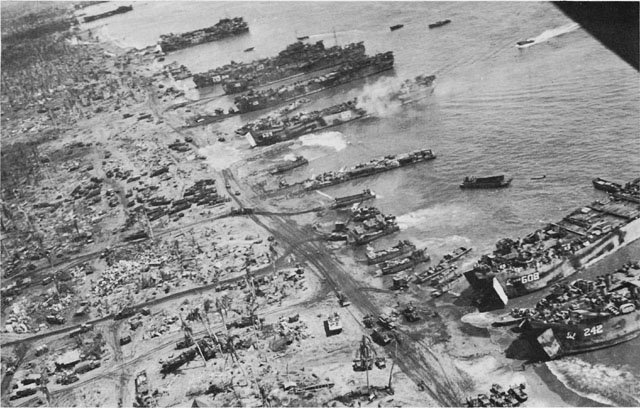


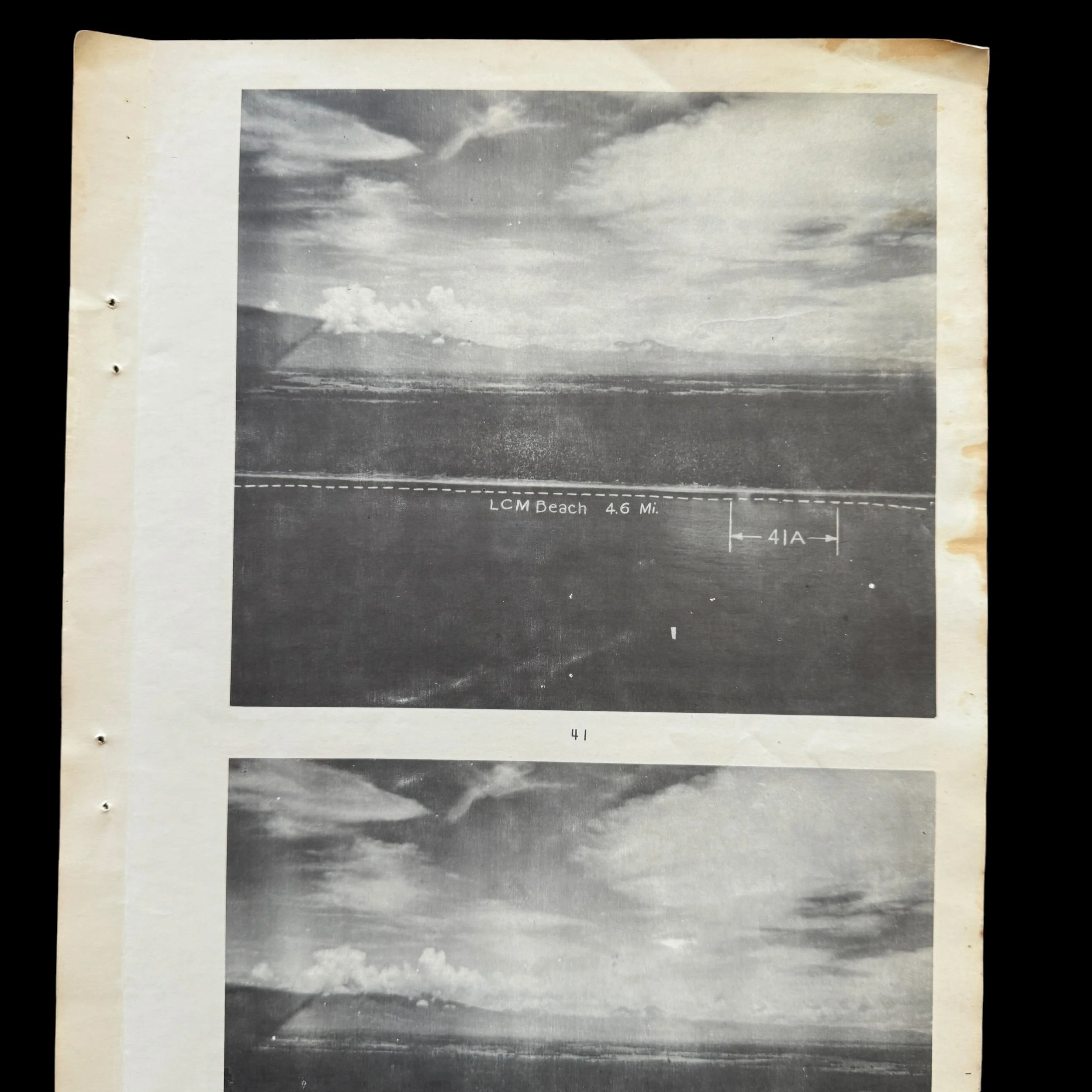


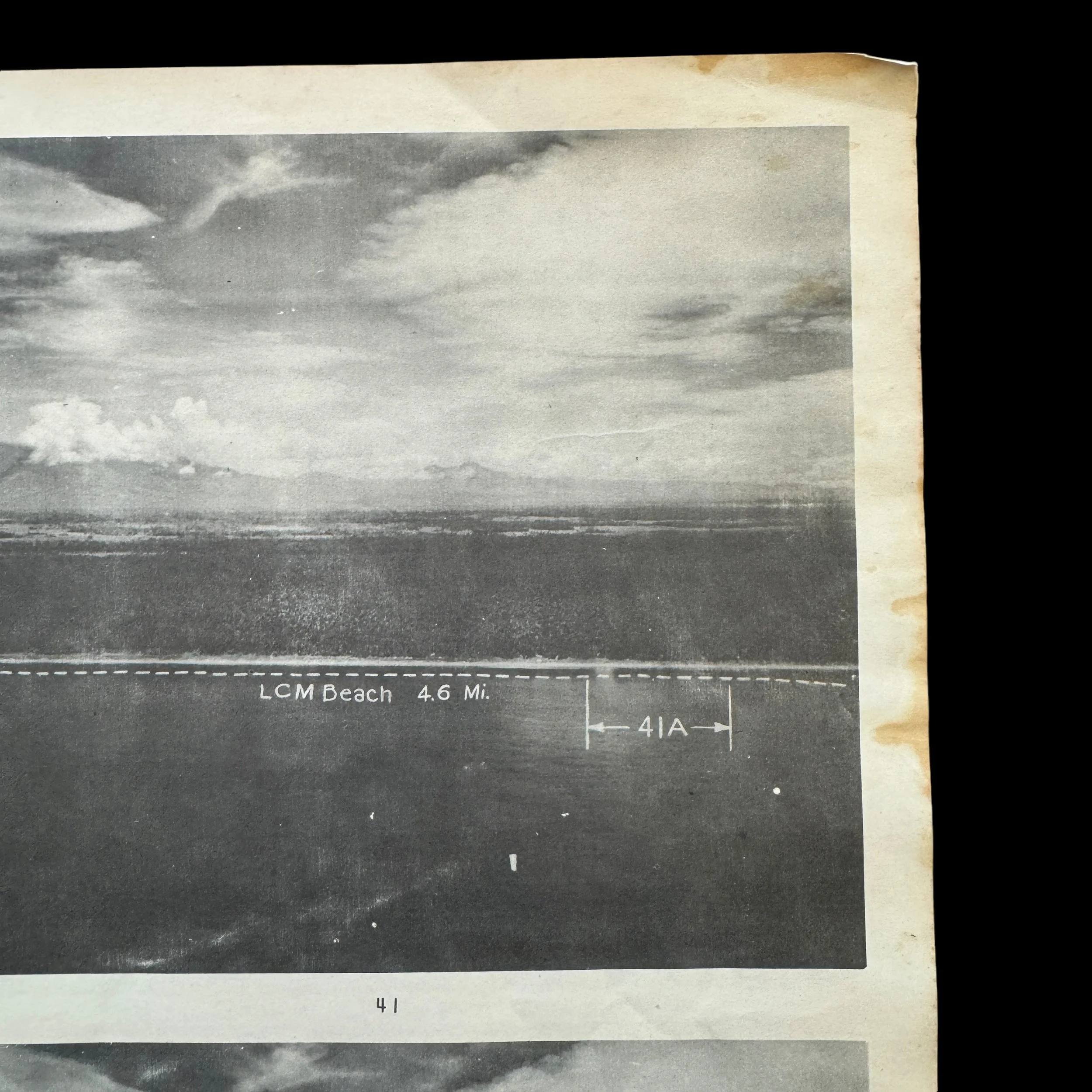

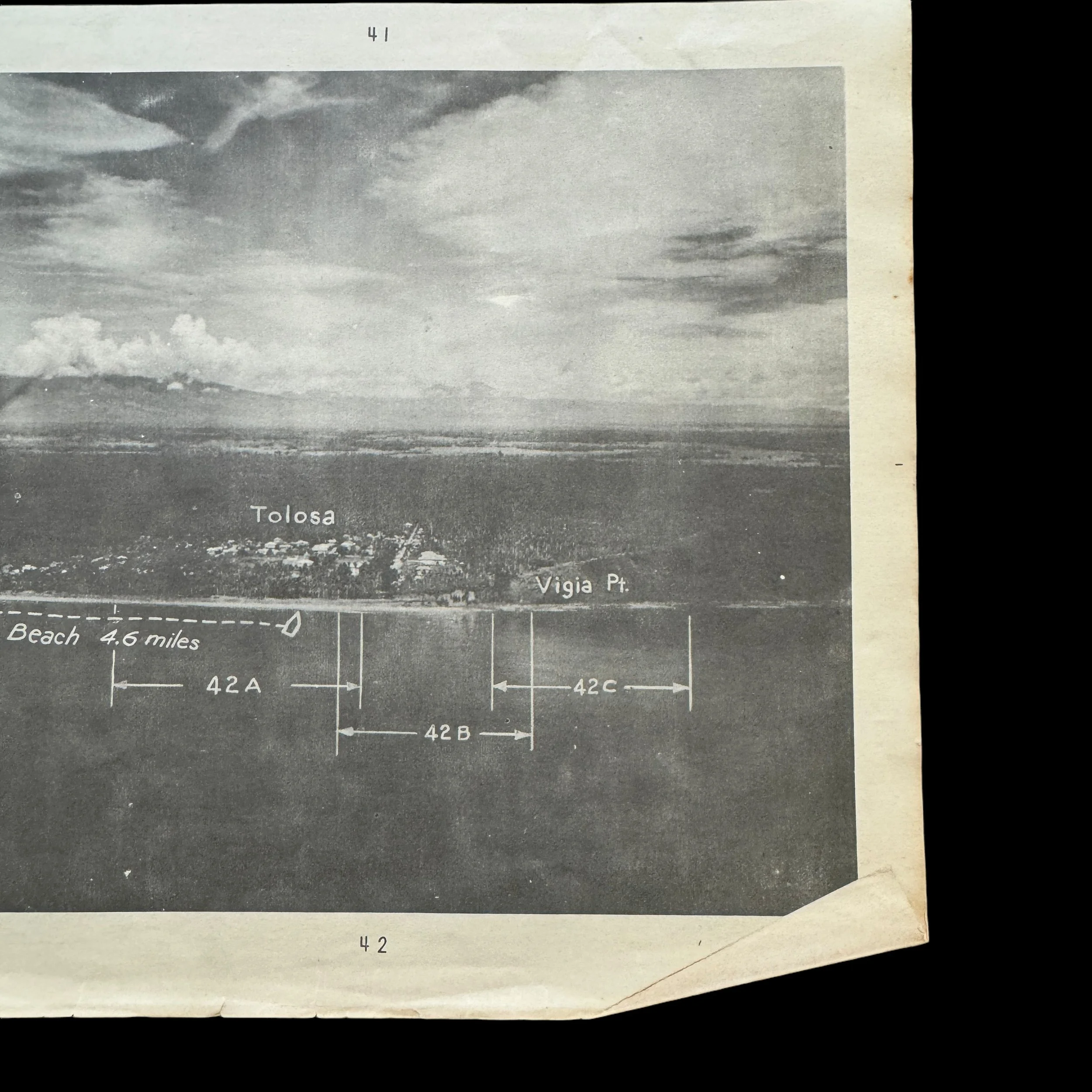
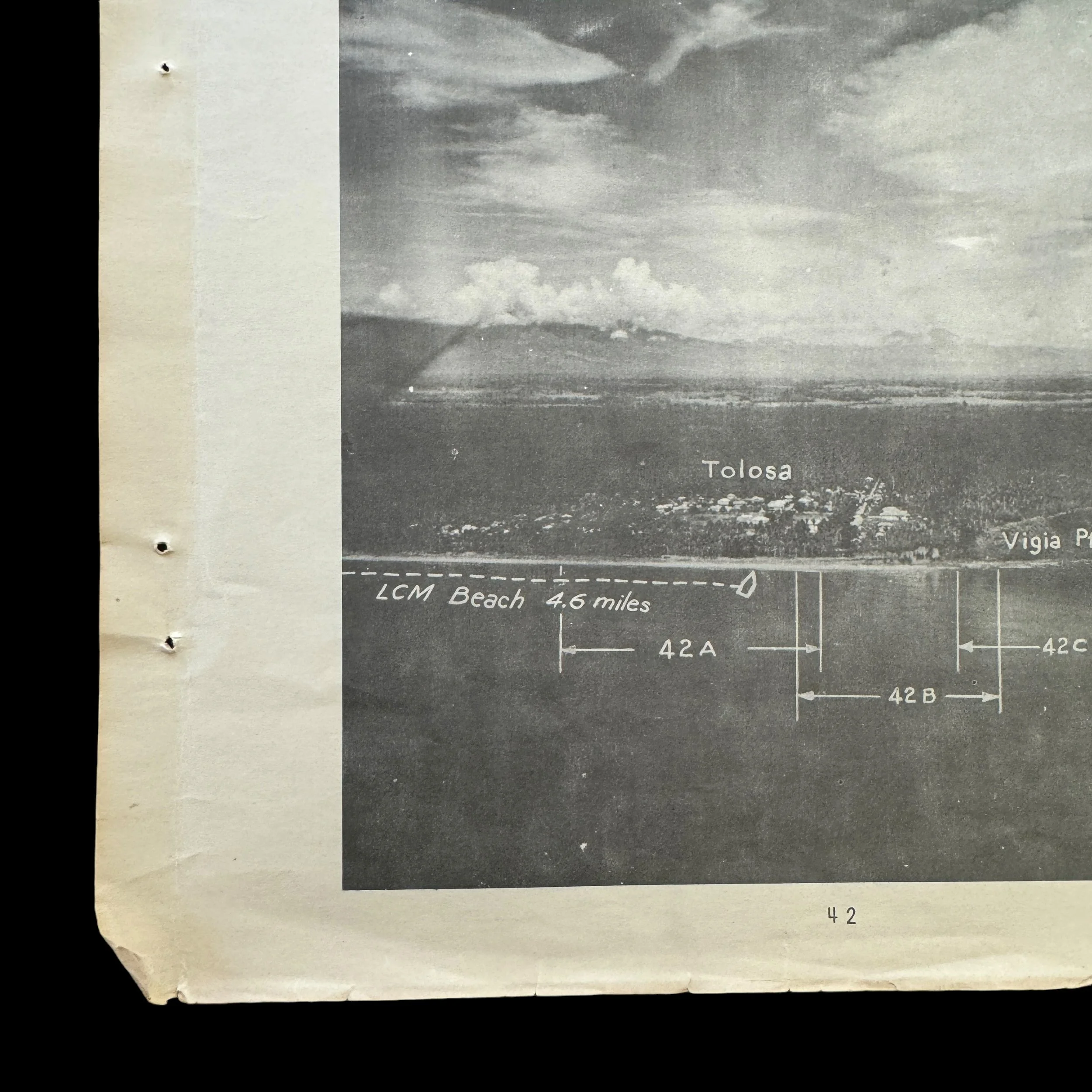
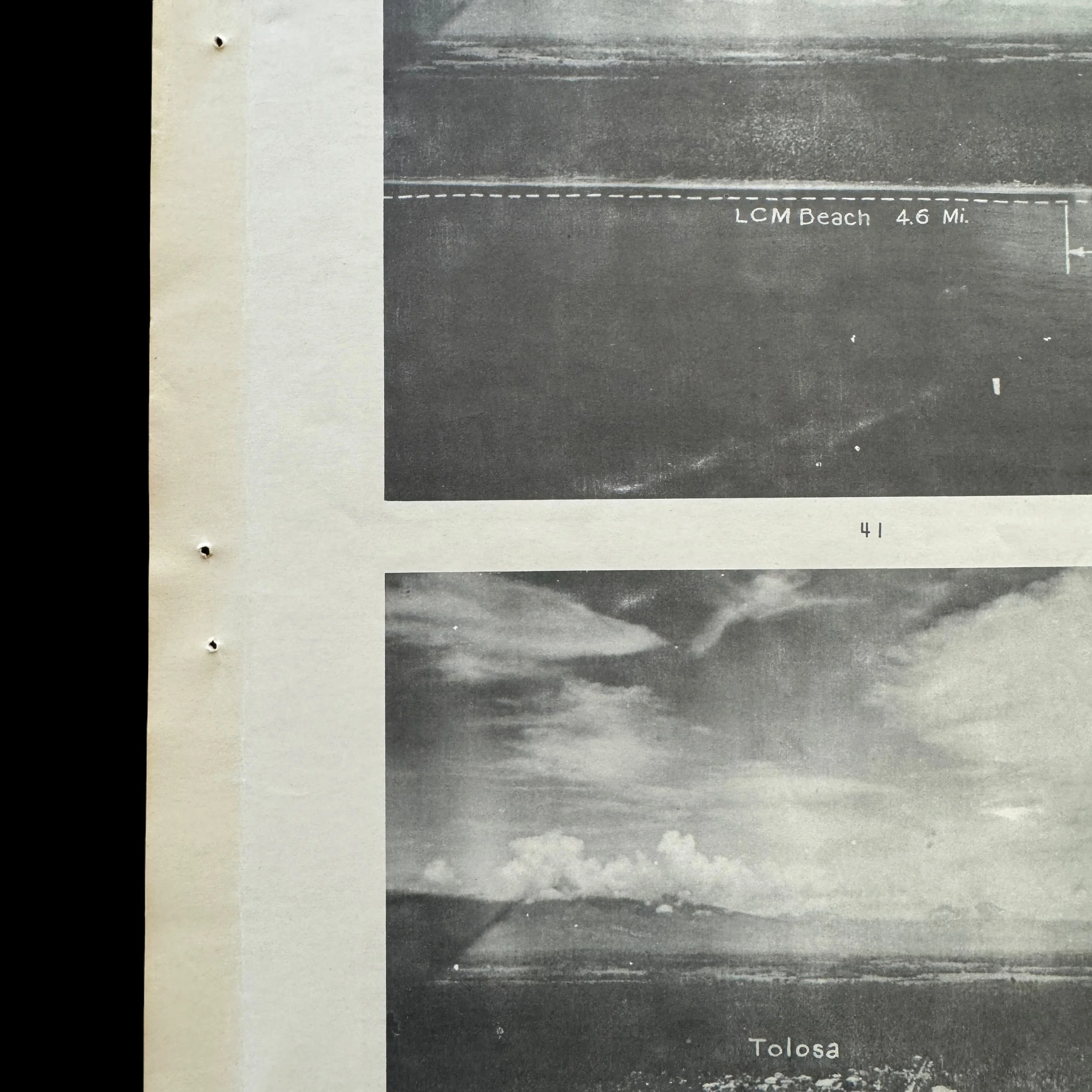
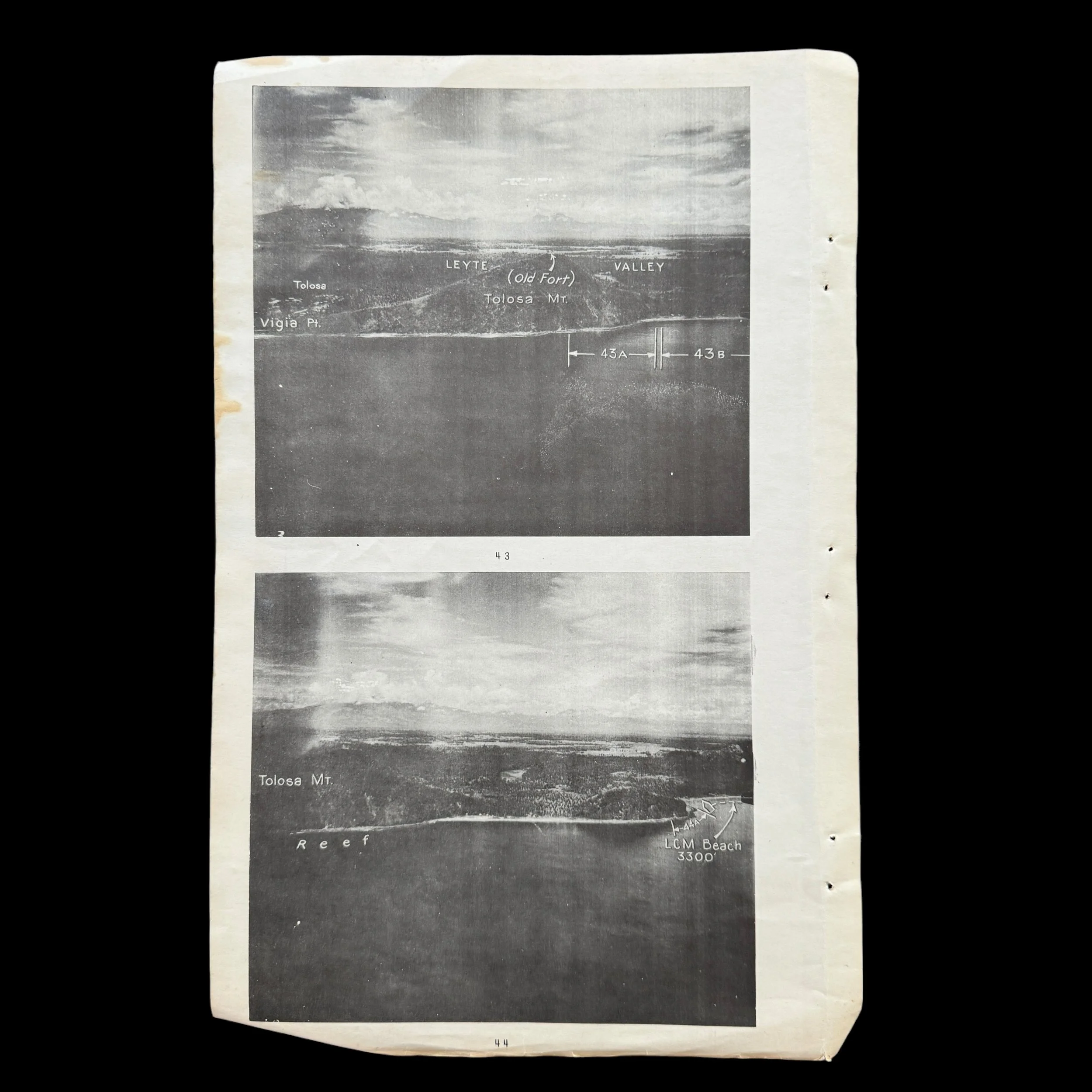
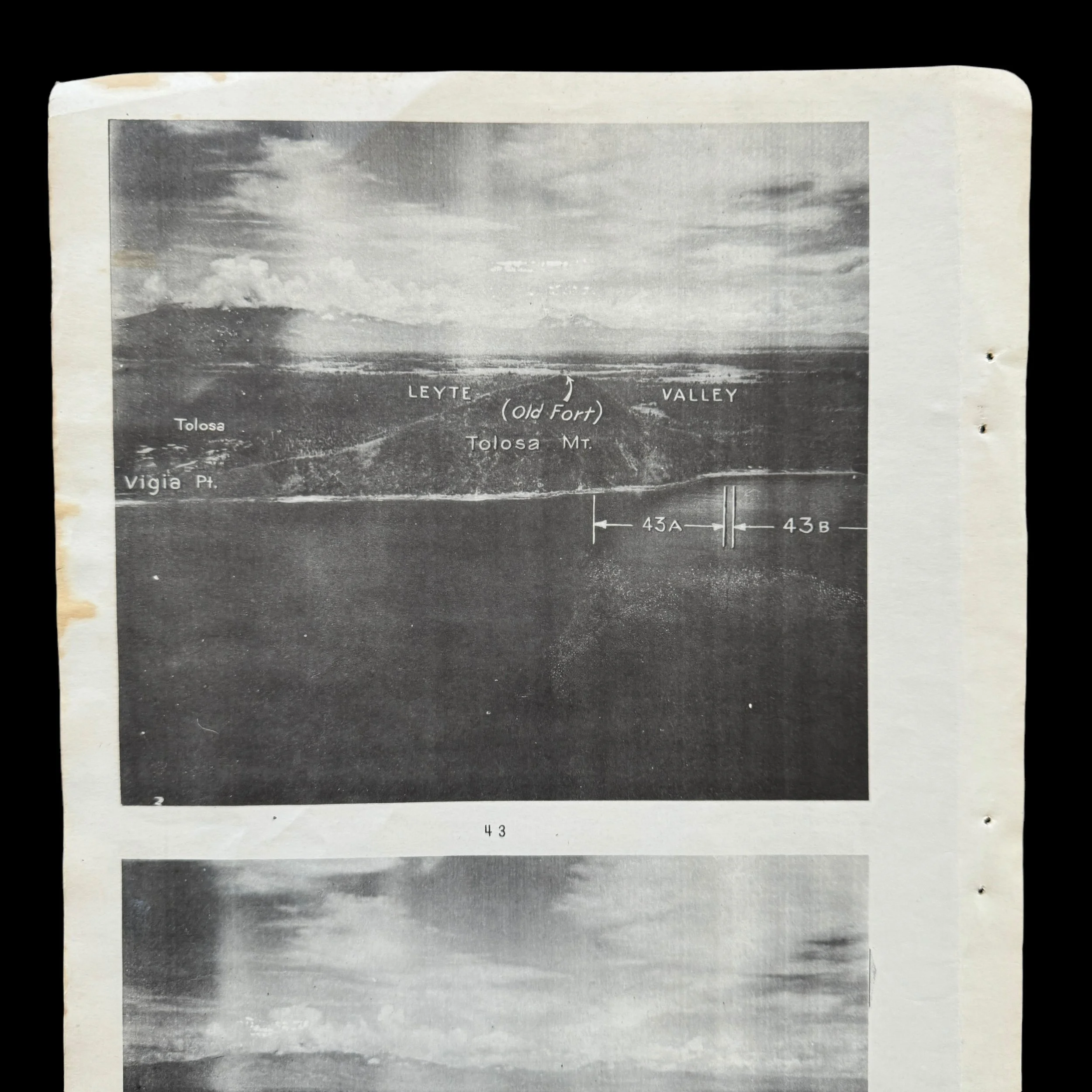
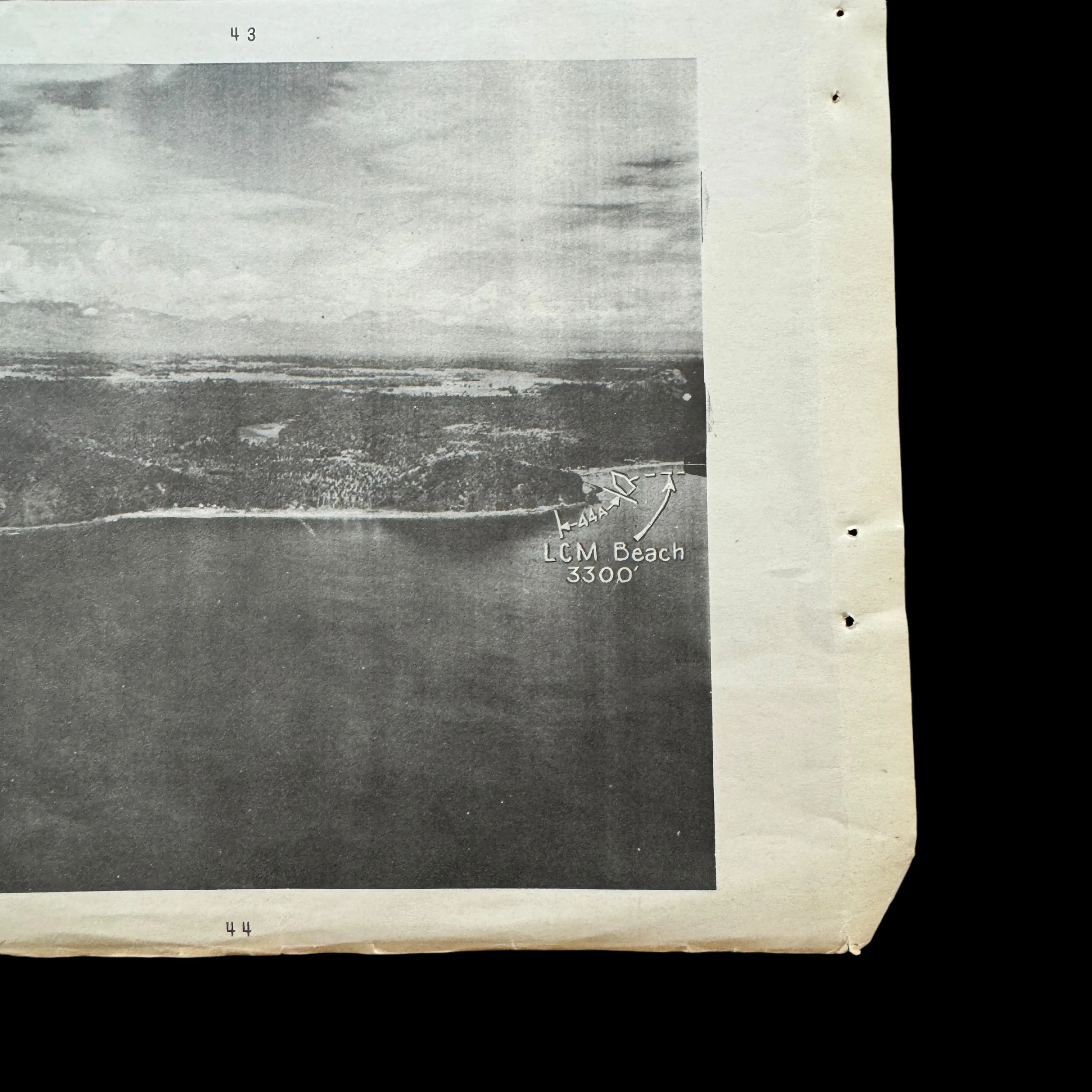
EXTREMELY RARE! WWII 1944 USS DuPage (APA-41) Battle of Leyte Beachhead Landing Invasion Map (Double-Sided)
Comes with a hand-signed C.O.A.
Size: 9 x 14 inches
This exceptionally rare, museum-grade WWII artifact is an original World War II Battle of Leyte landing beachhead invasion map, used by the USS DuPage (APA-41) during General Douglas MacArthur’s iconic amphibious operation to liberate the Philippines. The USS DuPage (APA-41), an attack transport ship, played a significant role in the Pacific Theater during World War II. This vessel was instrumental in various operations during the Philippines campaign, which marked a turning point in the Allies’ effort to defeat Japan and liberate Southeast Asia. From carrying troops in amphibious assaults to serving as a logistical hub, the DuPage was a vital component in the success of these missions.
This combat invasion map was used by the USS DuPage (APA-41) during the D-Day landings at Tacloban and throughout key operations around Leyte from 1944 to 1945:
Leyte (20 October 1944):
The DuPage carried U.S. Army troops for the initial amphibious assault at Leyte as part of the larger effort to liberate the Philippines from Japanese occupation. Leyte was the focal point of the campaign, and the invasion marked the beginning of the U.S. re-establishment of control over the Philippines.Reinforcement at Leyte (14 November 1944):
After the initial landings, DuPage sailed to Hollandia to transport reinforcements back to Leyte. These additional troops were essential for sustaining the campaign as the fighting on the island intensified.Lingayen Gulf (9 January 1945):
Although not directly at Leyte, the invasion of Lingayen Gulf on Luzon was closely related to the broader Philippines campaign. After the landings here, the DuPage embarked casualties and continued its support of operations in the region.San Fabian, Luzon (9 January 1945):
The DuPage landed troops at San Fabian, a critical part of the Luzon invasion. This location, although north of Leyte, was part of the overall strategy to liberate the Philippines and provided a launching point for further operations.Zambales, Luzon (29 January 1945):
Another important landing occurred at Zambales, Luzon. The DuPage played a role in the liberation of Luzon, further aiding the push through the Philippines following the Leyte landings.San Pedro Bay, Leyte (Various Dates):
The DuPage frequently returned to Leyte after various operations, including after being damaged by a kamikaze attack in January 1945. San Pedro Bay served as a staging and logistical hub for the DuPage and other ships involved in the Pacific campaigns.
The USS DuPage played a critical role in the Pacific Theater during World War II, earning an impressive six Battle Stars—the most awarded to a ship of its kind in the Pacific Fleet. This ship was pivotal in delivering Marines and armaments for key assault landings across the Marshall Islands, Guam, the Palau Islands, Peleliu, Leyte, Lingayen Gulf, and San Antonio Bay.
One of the most harrowing episodes in the ship’s service came when it was struck by a Japanese kamikaze attack. The suicide plane hit the DuPage, killing 35 crew members and wounding 157. In the midst of the chaos, four courageous sailors saved countless lives by heroically tossing overboard a 500-pound bomb that had lodged itself in the deck without detonating. Their quick actions prevented what could have been a far greater tragedy, preserving both the ship and many of its crew members.
The map, double-sided and meticulously created with the most updated and secret U.S. military intelligence, was a critical navigational tool for the DuPage and other Landing Craft Infantry (LCI) and Landing Craft Medium (LCM) ships as they approached participated in the D-Day assault of Leyte on October 20, 1944. as well as numerous combat missions around Letye to support U.S. operations. This map represents not only a strategic guide but also a tangible link to one of the most crucial moments in the Pacific campaign.
The USS DuPage and Key Operations During the Philippines Campaign:
D-Day Leyte (20 October 1944)
The initial landings at Leyte on October 20, 1944, marked the beginning of the Allied invasion to reclaim the Philippines, a critical moment in the Pacific campaign. The USS DuPage carried U.S. Army troops for the amphibious assault as part of General Douglas MacArthur’s much-anticipated return to the Philippines, fulfilling his famous promise, “I shall return,” made after his forced withdrawal from the islands in 1942.
Leyte was chosen as the initial target due to its central location in the Philippines archipelago, making it an ideal base for launching further operations. The invasion aimed to cut off Japan’s access to vital resources in Southeast Asia and disrupt its defensive perimeter. The Japanese forces on Leyte were ill-prepared to counter the massive Allied invasion, which consisted of more than 700 ships and over 200,000 troops. The DuPage played a crucial role in transporting the first waves of U.S. soldiers who would go on to secure beachheads near Tacloban and Dulag.
Despite heavy resistance from entrenched Japanese forces, U.S. forces quickly established a foothold on the island. The DuPage was essential in delivering reinforcements and supplies that enabled the Allies to maintain momentum in their campaign. This landing marked the beginning of the end for Japanese occupation in the Philippines and set the stage for further Allied advances throughout the archipelago.
Reinforcement at Leyte (14 November 1944)
After the initial landings at Leyte, the fighting intensified as Japanese forces attempted to hold their positions and launch counterattacks. The USS DuPage sailed from Leyte to Hollandia (in present-day Papua, Indonesia) to bring back critical reinforcements and supplies to support the troops on Leyte. This operation on November 14, 1944, was part of a broader strategy to ensure the success of the campaign by bolstering the Allied presence on the island and maintaining pressure on Japanese forces.
The DuPage’s role in this reinforcement mission was vital. The Japanese had moved reinforcements of their own to Leyte, and the battle on the island became a prolonged struggle in difficult terrain. The additional troops and supplies brought by the DuPage helped to ensure that the U.S. forces had the manpower and resources to continue their push against entrenched Japanese defenses. The reinforcements were particularly important as they allowed the U.S. Army to expand its control over the island and secure key airfields, which were essential for further operations in the region.
Lingayen Gulf (9 January 1945)
Although not directly tied to Leyte, the invasion of Lingayen Gulf on January 9, 1945, was a critical part of the broader Philippines campaign. Lingayen Gulf, located on the western side of Luzon, was the gateway to Manila, the capital of the Philippines. The operation aimed to liberate Luzon, the largest and most populous island in the Philippines, and deliver a crushing blow to Japanese forces.
The USS DuPage was once again called into action, landing troops as part of the initial assault on the beaches near Lingayen Gulf. The landing was met with fierce resistance from Japanese forces, including kamikaze attacks, which targeted the invasion fleet. Despite this, the operation was successful, and the DuPage embarked casualties from the beach and nearby ships before continuing its support of Allied operations in the region.
Lingayen Gulf was one of the last major amphibious operations of the Pacific War, and it paved the way for the liberation of Manila. The operation’s success marked the beginning of the end for Japanese forces in the Philippines, as U.S. forces steadily reclaimed control of Luzon.
San Fabian, Luzon (9 January 1945)
As part of the invasion of Luzon, the USS DuPage also landed troops at San Fabian on January 9, 1945. San Fabian, located on the northern shore of Lingayen Gulf, was a critical landing site for the Luzon invasion, providing a strategic entry point for U.S. forces to advance inland toward key objectives, including Clark Air Base and Manila.
The landings at San Fabian were essential to the success of the Luzon campaign. Japanese forces, while heavily entrenched, were unable to repel the sheer force of the U.S. invasion, and the troops delivered by the DuPage were crucial in securing the beachhead and establishing a foothold for further operations. The capture of San Fabian allowed U.S. forces to quickly move inland, cutting off Japanese supply lines and weakening their defensive capabilities.
The operation at San Fabian was part of a larger strategy to liberate the entire island of Luzon, the most heavily defended part of the Philippines. By securing key landing points such as San Fabian, U.S. forces were able to rapidly advance, ultimately leading to the liberation of Manila in February 1945.
Zambales, Luzon (29 January 1945)
Another significant landing took place at Zambales on January 29, 1945, when the USS DuPage delivered U.S. troops as part of the continued push to liberate Luzon. Zambales, located on the western coast of Luzon, was a strategically important area due to its proximity to Manila and its role as a supply route for Japanese forces.
The landing at Zambales was part of a broader effort to encircle and cut off Japanese forces entrenched in Manila and central Luzon. The troops landed by the DuPage played a key role in securing this region and facilitating the final push toward Manila. The operation at Zambales helped to isolate Japanese forces in the southern and central parts of the island, allowing U.S. forces to concentrate their efforts on liberating the capital and key military installations.
The successful landings at Zambales and other key locations along Luzon’s coast significantly weakened Japanese defenses, allowing U.S. forces to complete the liberation of the island and secure the Philippines as a base for future operations against Japan.
San Pedro Bay, Leyte (Various Dates)
Throughout the Philippines campaign, the USS DuPage frequently returned to San Pedro Bay, Leyte, which served as a crucial logistical hub for the Allied forces. San Pedro Bay was an ideal location for resupplying, repairing, and staging operations as it provided a safe harbor and central location for the Pacific fleet.
The DuPage played a critical role in transporting troops, supplies, and equipment between various operations while utilizing San Pedro Bay as a base of operations. One of its most notable returns to Leyte occurred after the ship sustained severe damage from a kamikaze attack on January 10, 1945, during the Lingayen Gulf invasion. Despite the damage and loss of 35 crew members, the DuPage continued to serve as a guide ship and safely arrived in San Pedro Bay for emergency repairs.
San Pedro Bay was not only a staging ground for amphibious operations but also a vital medical and logistical hub where ships like the DuPage could regroup, resupply, and repair before continuing their missions. The bay remained an essential component of the Allies' campaign to liberate the Philippines and secure a foothold in the Pacific.
The USS DuPage was an integral part of the U.S. Navy’s efforts during the Philippines campaign, participating in critical operations that contributed to the liberation of the archipelago from Japanese occupation. From the initial landings at Leyte to the battles at Lingayen Gulf, San Fabian, and Zambales, the DuPage played a crucial role in transporting troops, delivering supplies, and supporting Allied operations across the region. Its repeated returns to San Pedro Bay underscored the ship’s importance as a logistical asset, even after sustaining significant damage in combat. The DuPage’s service during these operations exemplifies the dedication and resilience of the Allied forces in the Pacific Theater, paving the way for the eventual victory over Japan.
The Invasion of Leyte was part of MacArthur’s larger strategy to fulfill his famous vow, “I shall return,” after being forced to evacuate the Philippines in 1942. This marked the beginning of the Philippines campaign, a major operation aimed at severing Japan’s access to its Southeast Asian territories and resources. The invasion unfolded on October 20, 1944, when over 700 Allied ships assembled off the eastern coast of Leyte, making this one of the largest amphibious operations of the war.
The U.S. Sixth Army, commanded by General Walter Krueger, was tasked with the beach landings. Supporting them was an immense naval force, including Admiral William Halsey’s Third Fleet and Admiral Thomas Kinkaid’s Seventh Fleet. In total, over 200,000 American troops, along with their equipment, embarked on the invasion. The meticulously prepared Tacloban beachhead map was crucial for coordinating the precise landings amidst heavy combat.
At dawn, U.S. forces initiated their assault on Leyte’s eastern shore, focusing on the beaches near Tacloban and Dulag. Before the landings, naval bombardments and airstrikes pummeled Japanese defenses, creating openings for the advancing troops. The Japanese resistance, though determined, struggled with disorganized communication and supply shortages, which prevented them from effectively repelling the Allied forces. This allowed the U.S. Sixth Army to establish a strong foothold, ensuring the success of the landings.
The Leyte invasion is significant not only for its immediate military success but also for the subsequent Battle of Leyte Gulf, which took place from October 23-26, 1944. This massive naval confrontation virtually destroyed the Japanese Navy's ability to continue large-scale operations, further securing the Allies' dominance in the Pacific.
This D-Day invasion map is a piece of living history, providing a window into the strategic planning and daring execution of one of the most important operations of the Pacific War. Its use aboard the USS DuPage, which was vital in coordinating the landing operations, makes it an unparalleled artifact from the Leyte campaign and a symbol of the Allied victory that would soon follow.
Condensed WWII Combat History of the USS DuPage (APA-41):
DuPage arrived in San Diego from Norfolk on 2 November 1943 to serve as flagship for a transport division during training. She departed on 13 January 1944, carrying U.S. Marines for the assault on Kwajalein, staying until 6 February. After stops at Funafuti and Guadalcanal, DuPage participated in troop redeployments in the Solomons, Emirau landings (April 1944), and Cape Gloucester operations (April-May). She then joined the Guam invasion from 21-26 July, evacuating casualties to Eniwetok before returning to Guadalcanal for replenishment.
In September 1944, DuPage supported the Peleliu assault, losing three landing craft and one crewman in the fighting. She then prepared for the Philippines campaign, landing U.S. Army troops at Leyte on 20 October, returning with reinforcements in November. After rehearsals in New Guinea, she landed troops at Lingayen Gulf on 9 January 1945. The next day, a kamikaze attack killed 35 and wounded 136, but DuPage completed her mission and made it to Leyte for repairs.
Following troop landings at Zambales, Luzon in January 1945, DuPage sailed for overhaul in San Francisco. After repairs, she transported troops from Seattle to Okinawa and Guam, returning to San Francisco in July. As flagship of Transport Division 63, she sailed in August with Army Air Force personnel to Leyte, then carried occupation troops to Japan in October. She completed "Magic Carpet" duty, returning veterans from Guam to the U.S., and arrived in Portland, Oregon, on 5 January 1946.
The Battle of Leyte: Turning the Tide in the Pacific
The Battle of Leyte, one of the most decisive engagements of World War II, was a pivotal event in the Pacific Theater. Fought from October 20 to December 31, 1944, it marked the beginning of the Philippines campaign, fulfilling General Douglas MacArthur’s famous pledge, “I shall return,” after being forced to evacuate the islands in 1942. More than a military operation, Leyte’s invasion heralded the collapse of Japanese naval power and opened the gateway to the eventual liberation of the entire Philippines, striking a crucial blow to Japan's dwindling empire.
The battle unfolded in two distinct yet interconnected operations: the amphibious landings on the island of Leyte and the massive naval confrontation known as the Battle of Leyte Gulf. Together, these engagements played a monumental role in shifting the balance of power in the Pacific, crippling Japan’s ability to defend its territories, and hastening the end of the war.
Strategic Importance of Leyte
Leyte, part of the Visayan Islands in the central Philippines, held immense strategic importance. Its central location made it an ideal launching point for subsequent operations aimed at liberating the rest of the archipelago and cutting off Japanese access to key resources in Southeast Asia. The invasion of Leyte also represented a direct challenge to Japan’s defensive perimeter, designed to prevent Allied forces from reaching the home islands.
For General MacArthur, retaking the Philippines was both a military necessity and a personal mission. The Philippines had been a U.S. territory before falling to the Japanese early in the war, and its liberation would reestablish American sovereignty in the region. MacArthur’s dramatic escape from Corregidor in 1942, followed by his determined efforts to reclaim the islands, had made him a symbol of resistance against Japanese expansion. His return would not only have significant military value but would also fulfill a personal promise to the Filipino people.
The Invasion Begins
On October 20, 1944, more than 700 ships of the U.S. Navy’s Seventh Fleet, commanded by Vice Admiral Thomas Kinkaid, converged on Leyte’s eastern shores. Under the overall command of General Walter Krueger, the U.S. Sixth Army spearheaded the amphibious assault, supported by intense naval bombardments and air strikes. Allied forces targeted the beaches near Tacloban and Dulag, key points on the island’s eastern coastline.
The naval bombardment, conducted by battleships and cruisers, was devastating, softening Japanese defenses before the landings began. Over 200,000 American troops participated in the invasion, bolstered by air cover from the U.S. Third Fleet, under the command of Admiral William Halsey. Air superiority was crucial to the success of the operation, as it prevented Japanese aircraft from effectively disrupting the landings and protected the advancing ground forces.
The landings themselves, though initially met with stiff resistance, were successful in establishing a beachhead. The Japanese forces on Leyte, though numerous, were poorly coordinated due to communication problems exacerbated by the Allied naval bombardment. While some beachheads faced heavy opposition, the disarray among the Japanese defenders allowed U.S. forces to make swift gains. By the end of the first day, the U.S. Sixth Army had established a firm foothold on the island, with MacArthur famously wading ashore to announce the liberation of the Philippines.
Japanese Response and the Battle of Leyte Gulf
The Japanese Imperial High Command recognized the strategic significance of Leyte and responded with a desperate attempt to repel the invasion. This response led to the Battle of Leyte Gulf, fought from October 23-26, 1944, one of the largest naval battles in history. The Japanese launched a bold counteroffensive involving four separate fleets aimed at cutting off American supply lines and destroying the invasion force.
The Japanese battle plan, known as Sho-Go (Operation Victory), called for a three-pronged attack. The northern force, led by Admiral Jisaburo Ozawa, was designed to act as a decoy to lure Halsey’s Third Fleet away from Leyte, while two other Japanese task forces, under Admirals Takeo Kurita and Shoji Nishimura, would strike from the west and south to catch the invasion fleet in a pincer movement.
Initially, the Japanese strategy seemed to work as Halsey took the bait, sending his fleet northward to engage Ozawa’s force. However, the bravery and resilience of American naval and air forces, particularly in the Battle off Samar, thwarted the Japanese advance. A small group of U.S. escort carriers and destroyers heroically faced off against Kurita’s vastly superior force in one of the most remarkable actions of the Pacific War. Though heavily outgunned, the American ships managed to repel the Japanese, preventing them from reaching Leyte Gulf and disrupting the landings.
The Battle of Leyte Gulf ended in a decisive victory for the Allies. The Japanese Navy suffered catastrophic losses, including the destruction of four aircraft carriers, three battleships, ten cruisers, and eleven destroyers. More importantly, the battle crippled Japan’s ability to conduct large-scale naval operations for the remainder of the war. With its fleet decimated and its fuel supplies running low, Japan could no longer effectively contest Allied dominance in the Pacific.
The Struggle for Leyte
While the naval victory was decisive, the ground campaign on Leyte was far from over. Japanese troops, determined to hold the island, withdrew into the island’s rugged interior, where they mounted a stubborn resistance. Reinforcements from other parts of the Philippines, including Leyte’s neighbor, Samar, bolstered Japanese numbers, and the fighting soon bogged down into a brutal battle of attrition.
The rugged terrain, dense jungles, and heavy monsoon rains created a challenging environment for U.S. troops, who faced not only well-entrenched Japanese forces but also supply shortages and disease. The Japanese soldiers, many of whom had received orders to fight to the death, employed guerrilla tactics, ambushing American patrols and launching night raids. U.S. forces, however, slowly gained the upper hand, aided by their superior firepower and air support.
One of the most critical battles on Leyte was fought in the Leyte Valley, where U.S. forces sought to capture key airfields and supply lines. The Japanese attempted to hold the valley with reinforcements but were ultimately overwhelmed. By mid-December, the U.S. Sixth Army had secured most of the island, though pockets of Japanese resistance continued to fight until the end of the year.
The Aftermath and Significance
The Battle of Leyte was a turning point in the Pacific War. The invasion successfully cut off Japan from its vital resources in Southeast Asia, significantly weakening its war effort. The U.S. victory also paved the way for the liberation of the rest of the Philippines, a campaign that would continue until the Japanese surrender in August 1945.
Leyte’s capture also demonstrated the effectiveness of combined arms operations, with naval, air, and ground forces working in concert to overwhelm the Japanese. The battle showcased the growing superiority of the U.S. Navy and the declining ability of Japan to defend its empire. The decimation of the Japanese fleet during the Battle of Leyte Gulf left Japan virtually powerless to resist the advancing Allied forces, making Leyte a decisive moment in the war’s outcome.
For General MacArthur, the victory at Leyte was deeply personal, symbolizing his return to the Philippines and the fulfillment of a promise made two years earlier. The image of MacArthur wading ashore at Leyte became one of the most iconic moments of World War II, embodying both the resilience of the Allied forces and the importance of the Philippines in the broader war effort.
The Battle of Leyte was not only a tactical victory but also a symbol of Allied determination to liberate the Pacific from Japanese control. It shattered Japan’s ability to project naval power, severed its access to critical resources, and paved the way for further operations that would bring the war to Japan’s doorstep. The bravery of the U.S. forces, both on land and at sea, ensured the success of the operation, and Leyte remains one of the most significant engagements in the Pacific Theater of World War II. Through the sacrifice of thousands of soldiers, sailors, and airmen, the battle hastened the collapse of the Japanese Empire and set the stage for the final Allied victories in the Pacific.